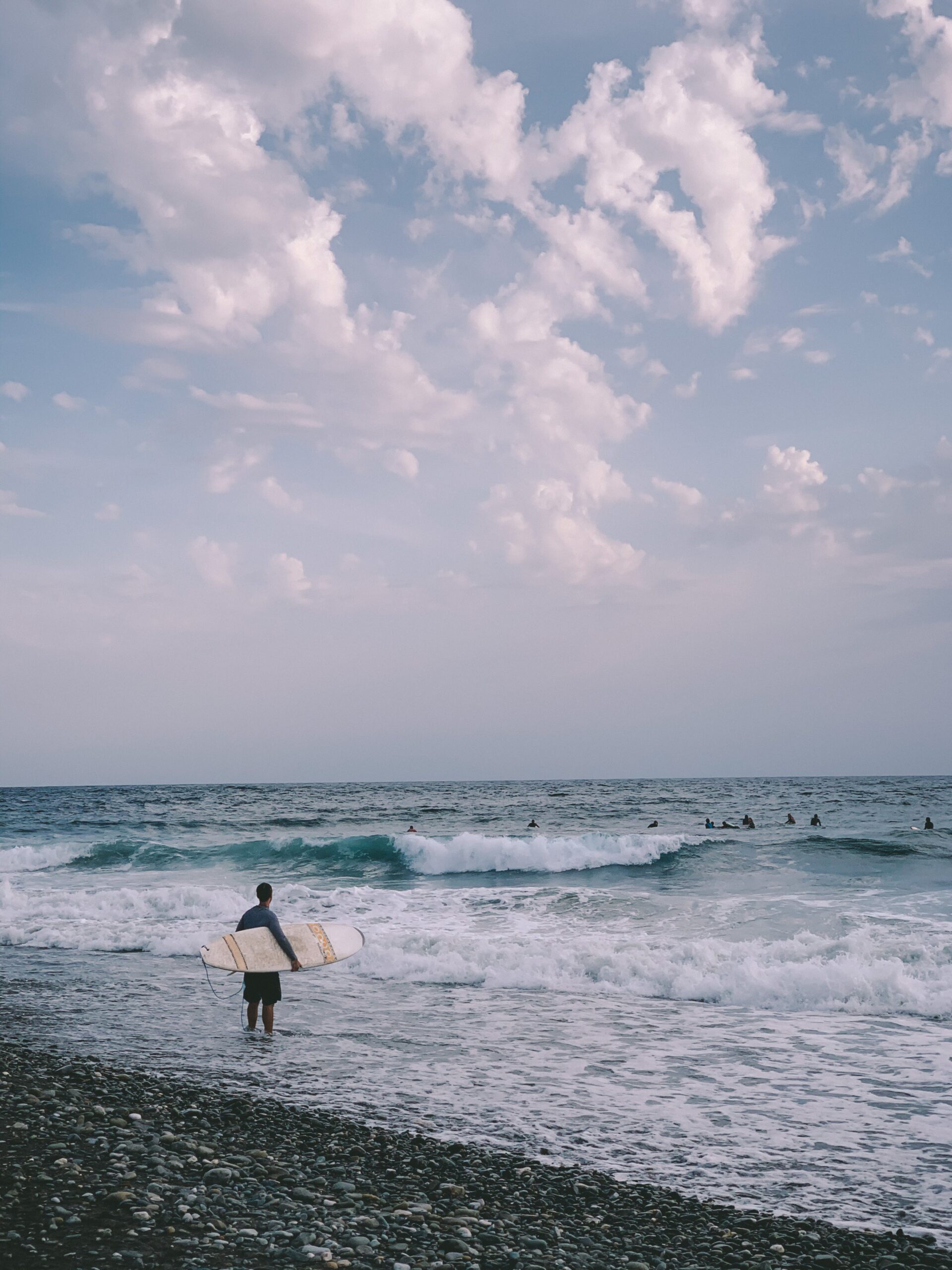Introduction
In the dance between tradition and recreation along the shores, the realms of surfing and traditional fishing practices converge, each holding its unique allure and significance. While surfing encapsulates thrill and enjoyment for enthusiasts, traditional fishing stands as a cultural cornerstone for many coastal communities. This article delves into the delicate balance between these worlds, exploring how coastal areas navigate between the waves of recreation and the timeless art of traditional fishing, striving for a harmonious coexistence
Surfing Culture: A Coastal Phenomenon
The surfing community has evolved from a niche subculture to a vibrant, influential presence in coastal areas worldwide. Initially rooted in Polynesian traditions, surfing has become a global phenomenon, attracting enthusiasts to coastal regions for its thrill and camaraderie.
Positive Impacts on Local Economies and Tourism
Surfing’s influence on local economies is profound. Coastal towns experience a surge in tourism due to their renowned surfing spots. Surfers flock to these areas, contributing to increased revenue for businesses—surf shops, accommodations, eateries, and local attractions thrive from this influx. Furthermore, surfing events and competitions serve as magnets, drawing spectators and generating substantial economic activity.
The tourism boost also extends to ancillary services such as surf schools, guiding tours, and rental shops, providing job opportunities for locals. Additionally, the vibrant surfing culture often translates into a unique charm that attracts non-surfing tourists, further benefiting the local economy.
Conflicts Arising from Surfing Activities in Fishing Areas
While surfing brings economic prosperity, conflicts can arise in areas where surfing and traditional fishing coexist. Competition for limited space in the water and potential damage to fishing gear from surfboards can strain relations between surfers and fishermen. Furthermore, the environmental impact of increased human activity in these areas can disrupt marine ecosystems, affecting fish habitats and spawning grounds.
Balancing the interests of both surfing enthusiasts and fishing communities requires open communication and mutual respect. Collaborative efforts, such as designated surfing zones and fishing areas, as well as educational initiatives about sustainable practices, can mitigate conflicts and foster harmony between these groups.
Understanding the multifaceted impacts of surfing on coastal communities is crucial. While it brings economic opportunities and cultural vibrancy, addressing conflicts arising from shared spaces is essential to sustain the delicate balance between surfing culture and traditional coastal livelihoods.
Traditional Fishing Methods: Vital to Coastal Communities
Traditional fishing methods have long been the lifeblood of coastal communities, ingrained in their cultural heritage and sustaining livelihoods for generations. Techniques like handline fishing, cast nets, and fish traps have been passed down through ages, fostering a deep connection between these communities and the sea. These methods not only provide sustenance but also form the basis of community identity, with rituals and customs intertwined with the fishing practices.
Challenges Faced by Fishermen Amid Changing Environments
However, the traditional fishing industry faces an array of challenges in the modern era. Changing environmental conditions, overfishing, and the encroachment of modern commercial methods pose significant threats to these time-honored practices. Climate change affects fish migration patterns and depletes marine resources, disrupting the delicate balance that sustains traditional fishing. Moreover, the allure of modernization, with its promises of efficiency, often pulls younger generations away from learning and perpetuating these age-old techniques.
Importance of Preserving Traditional Fishing Practices
Preserving traditional fishing practices isn’t just about sustaining a way of life; it’s about safeguarding a cultural legacy. These methods are repositories of ancestral knowledge, techniques honed over centuries that promote sustainability and respect for the marine ecosystem. Their preservation isn’t solely about economic sustenance but also about upholding cultural identities and maintaining a delicate harmony between humans and nature.
Efforts to document, educate, and incentivize the continuation of traditional methods are crucial. Collaborative initiatives involving local communities, governments, and conservation organizations can help introduce modern elements while safeguarding the essence of these practices. Recognizing the cultural significance of traditional fishing and integrating it into sustainable practices can pave the way for a harmonious coexistence between tradition and modernity.
The resilience and adaptability inherent in traditional fishing practices serve as a testament to the resourcefulness of coastal communities. Upholding these practices doesn’t just ensure their survival but honors the invaluable legacy they represent for both present and future generations.

Balancing Surfing and Fishing: Challenges and Coexistence
The coexistence of surfers and traditional fishers often presents a delicate balance amid shared coastal resources. Conflicts arise due to overlapping interests, raising environmental concerns and sustainability issues that require thoughtful consideration.
Conflicts and Environmental Concerns
Surfers seek pristine waves and undisturbed coastlines, often intersecting with traditional fishing practices that rely on these same coastal areas. Tensions arise when fishing activities interfere with wave quality or when surfers disrupt fishing operations by navigating through fishing zones.
Moreover, environmental impacts such as overfishing, habitat degradation from fishing gear, and pollution pose significant threats. Unregulated practices, including discarded fishing nets, can harm marine life and endanger both surfers and fishers.
Initiatives for Harmony and Sustainability
Efforts to foster harmony between surfers and fishers involve collaborative initiatives focusing on sustainability and mutual respect for coastal resources.
- Zoning and Regulation: Establishing designated zones for surfing and fishing helps delineate areas, minimizing conflicts. Regulations ensuring responsible fishing practices and surfing etiquettes can mitigate environmental damage.
- Community Engagement: Encouraging dialogue and collaboration among surfers, fishers, and local communities fosters understanding and shared responsibility for coastal preservation.
- Environmental Awareness: Educational programs highlighting the importance of marine conservation and sustainable fishing practices promote environmental stewardship among both surfers and fishers.
- Technology and Innovation: Encouraging innovative solutions, such as eco-friendly fishing gear and practices, reduces environmental impact while supporting livelihoods.
Pursuing a Harmonious Coexistence
Finding a balance between surfing and fishing involves recognizing the interconnectedness of these coastal activities. Through respectful cohabitation and a shared commitment to environmental stewardship, surfers and fishers can thrive alongside each other while safeguarding the delicate marine ecosystems they rely upon.
The Importance of Mutual Understanding and Respect
In the realms of nature and human interaction, the bedrock of harmony often lies in mutual understanding and respect. Nowhere is this more evident than in the symbiotic relationship between surfers and fishers. Their coexistence along coastal areas showcases a delicate balance forged through respect for each other’s pursuits.
Successful Cooperation Between Surfers and Fishers
In various coastal communities worldwide, inspiring instances of collaboration between surfers and fishers abound. Surfers, seeking the perfect wave, and fishers, reliant on the ocean’s bounty, have found ways to share these waters harmoniously. Collaborative efforts involve understanding each other’s needs and schedules, allowing for shared access to the sea while minimizing conflicts.
Some areas have witnessed the establishment of community-led initiatives where surfers and fishers come together to protect the marine ecosystem. These partnerships often extend beyond mere cohabitation, evolving into joint conservation efforts to preserve the very environment that sustains them both.
Encouraging Responsible Tourism and Conservation
The symbiosis between surfers and fishers underscores the significance of responsible tourism and conservation efforts. Encouraging visitors to engage with local communities and ecosystems while respecting their practices fosters a sustainable environment.
Responsible tourism involves not only enjoying the natural wonders but also leaving a positive impact. This includes supporting local economies, respecting cultural traditions, and advocating for environmental preservation. Conservation efforts aimed at protecting coastal habitats and marine life are pivotal for the longevity of this delicate balance.
Promoting awareness about the interconnectedness of different stakeholders—surfers, fishers, locals, and tourists—highlights the shared responsibility to protect coastal ecosystems. Through education, advocacy, and proactive measures, we can safeguard these precious environments for future generations to relish.
Embracing a future built on symbiosis and mutual respect among diverse coastal communities, surfers, fishers, and nature enthusiasts is the path forward. By fostering understanding and collaboration, we can create a world where the beauty of our oceans thrives in harmony with those who cherish them.
Video Credit: SlotCityFishing
FAQs
Q. How do surfing and traditional fishing coexist in coastal communities?
A. Balancing shared resources, establishing regulations, and fostering community dialogue promote harmonious coexistence.
Q. What environmental challenges do these activities pose?
A. Both activities can impact marine ecosystems, necessitating sustainable practices to minimize environmental harm.
Q. Are there conflicts between surfers and traditional fishermen?
A. Occasional conflicts arise over resource use and access, emphasizing the need for community engagement and regulatory frameworks.
Q. What role do local traditions play in conservation efforts?
A. Preserving cultural practices fosters community pride, driving conservation initiatives within these communities.
Q. Can policies effectively manage these activities?
A. Robust policies, when coupled with community involvement, can effectively manage and balance these pursuits.
Q. How does the economic significance differ between surfing and traditional fishing?
A. While both contribute to local economies, the economic structure and resource dependence vary between surfing and fishing.
Conclusion
As the sun sets on the shores where waves crash and fishing boats return, it’s evident that finding harmony between surfing and traditional fishing is not just a matter of balancing interests but respecting legacies and livelihoods. The oceans hold space for both exhilarating waves and timeless traditions. By fostering mutual respect, understanding, and sustainable practices, communities can preserve their cultural heritage while embracing recreational opportunities, ensuring that future generations can continue to ride the waves and honor the timeless art of traditional fishing along the coasts.
UP NEXT
Surfing and Ocean Acidification: The Threat to Marine Ecosystems



